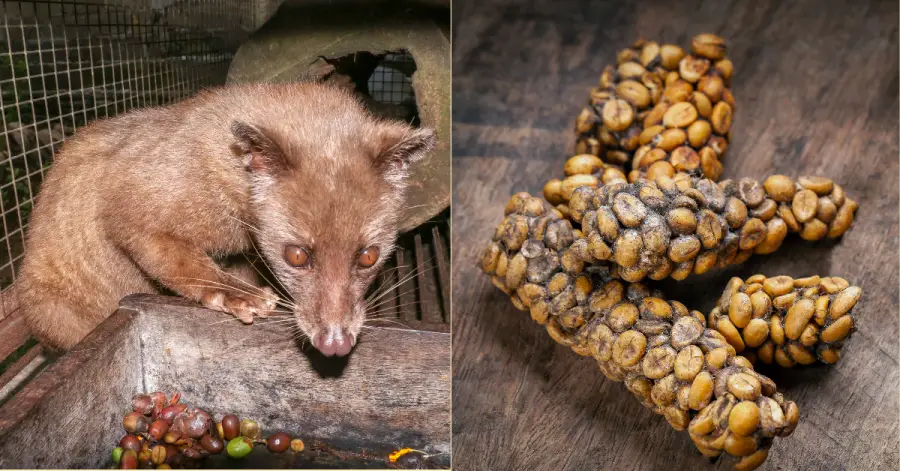The Way The Most Expensive Coffee In The World Is Made Is Both Disturbing And Alarming
Tags: opinion

The world’s most expensive coffee is made from the excreta of an animal. Let that sink in for a while. The coffee beans are fed to a civet, which then partially digests it, and poops it out to form the Kopi Luwak, a cuppa of which costs $80 in the US.
The civet is more of a Southeast Asian, Sub-Sahara African creature that has a monkey’s tail, a raccoon’s markings on its face, and spots all over its body. They are considered pretty significant on the food chain, where they eat small reptiles and insects and get eaten by leopards, crocodiles, and other apex predators.
Initially, the utility of civet in making a smoother cup of coffee actually prevented their total extinction. For the Palm civet in Indonesia is known for being quite a pest to farmlands- owing to its love for fruits. But it was soon found that its dung actually helps create finer coffee. The digestive enzyme inside the civet helps reduce the acidity in coffee beans that make it the world’s most expensive coffee.
But now, the scenario has changed quite a bit. Civet coffee is known throughout the world, and with the influx of tourists in Indonesia, the authorities have been caging civets up. Not only does this increase coffee production, but it also makes watching a civet a tourist’s itinerary.
Not long ago, World Animal Protection and Wildlife Conservation Research Unit from Oxford University decided to conduct research on the living conditions of 50 civets that have been held captive in Bali to increase the production of coffee. And the reports are quite grim.
Neil D’Cruze, one of the researchers mentioned that the cages and the welfare of the civets both failed the necessary requirements. Not only were the cages absolutely tiny- almost similar to rabbit hutches, the cleanliness, and sanitation of the animals were also neglected upon. The creator of the world’s most expensive coffee was sitting in a mess of its own droppings and urine.
The civets themselves were a curious bunch. Some were too thin, having only been fed coffee cherries. While some were obese, due to their inability to move. While yet a larger number was simply jacked up- with its continuous consumption of caffeine. What caught the researchers’ eyes was the mesh that the civets were supposed to spend their lives on. Living on such a mesh would definitely lead to abrasions, and sores throughout the body- a constant journey of pain and suffering.
Also, most of the civets had no access to clean drinking water and no contact with other civets. Rather, they had to constantly bear the brunt of traffic and noises, which are extremely disturbing to these nocturnal animals.
What Is The Result of Caging Animals For Creating The World’s Most Expensive Coffee?
The brutally honest answer? A luxury coffee that most of the population doesn’t consume, and one that is extremely second rate at best. Due to the constricting nature of the civet’s livelihood, they aren’t able to pick and eat the coffee cherry that they want. Rather they are force-fed any number of coffee cherries, which rather leads to an inferior product.
According to some coffee critics, the coffee also doesn’t deserve the taste of the world’s most expensive coffee. Why? For the civet’s digestive enzyme removes the very acids which are useful in giving coffee that particular smell and taste.
We can see for ourselves how abusive the situation is for kopi luwak and wild civets when the trader who passed on the world’s most expensive coffee from the East to the West has been asking us to not consume it anymore.
IMAGE FEATURED: Karel Bittner & Sirichai Asawalapsakul
Leave Comment: